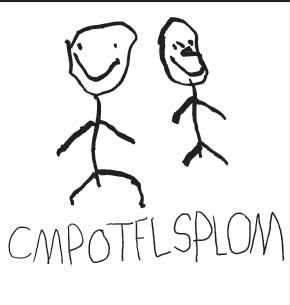Having an understanding that print carries meaning, while also knowing how books "work"
Print Awareness or Concepts of Print
The smallest unit of sound in our spoken language
What is a phoneme?
/m/, /a/, /f/, /sh/, /l/
What are examples of continuous sounds?
Assessments that are on-the-go, allow the teacher to get information about the reader throughout the process of reading, provide ongoing feedback, and allow the teacher to revise and tailor ongoing instruction.
What are formative assessments?

What is drawing and strings of letters?
Labeling items in the classroom, providing pattern predictable texts, and reading to children are all ways of doing this.
How can you promote print awareness/concepts of print?
A written letter or a group of letters representing one speech sound
What is a grapheme?
Pronouncing Pp as /p/ instead of /puh/
Pronouncing Gg as /g/ instead of /guh/
Pronouncing Ll as /l/ instead of /luh/
What is "clipping the schwa"?
Expressed as a percentage that is calculated by subtracting the total reading errors from the total read words, divided by the total words read times 100.
What is an Accuracy Rate?
Spelling
U r m fnd.
(You are my friend.)
What is the semiphonetic stage?
Asking where the front cover of a book is, having a student find the first/last word in a sentence, and asking a child to identifying upper and lower case letters on a page
How can you assess print awareness and concepts of print?
Two letters that represent one speech sound. Examples: sh, ch, th
What is a digraph?
Letter sounds, short vowel patterns, blends and digraphs, r-controlled vowels, long vowel words, and diphthongs and unique vowel patterns
What is the order of phonics skills from easiest to most challenging?
Meaning, Structure, and Visual
What are the three error types we evaluate with miscue analysis on a running record?
The practice of children using incorrect and unconventional spelling of words that primarily demonstrates their phonological knowledge.
What is Invented/Inventive Spelling?
the understanding that there are systematic and predictable relationships between written letters and spoken sounds
What is alphabetic principle?
When you have two or more letters appearing together, and you can hear each sound that each consonant would normally make
What is a consonant blend?
/f/, /h/, /t/, /sh, /p/
What are examples of unvoiced phonemes?
Standardized process for coding, scoring, and analyzing a student’s precise reading behaviors
What is a running record?
Understanding the meaning of the words you spell
What is Semantic Knowledge?
Two to four per week, daily practice, explicit instruction, and taught in isolation.
How should we teach letter-sound correspondence and alphabetic principle?
A sound formed by the combination of two vowel sounds in a single syllable, in which the sound begins as one vowel and moves toward another.
What is a diphthong?
CV
CVC
CVVC
CVCV
VC
What are vowel consonant patterns?
An assessment that helps us to gain a baseline understanding of student mastery, helps us to form groups for learning, and helps us to determine goals for a unit.
Understanding what letter patterns are plausible in English spelling and knowing there are conventions that help us decide which letter patterns to use
What is Orthographic Knowledge?